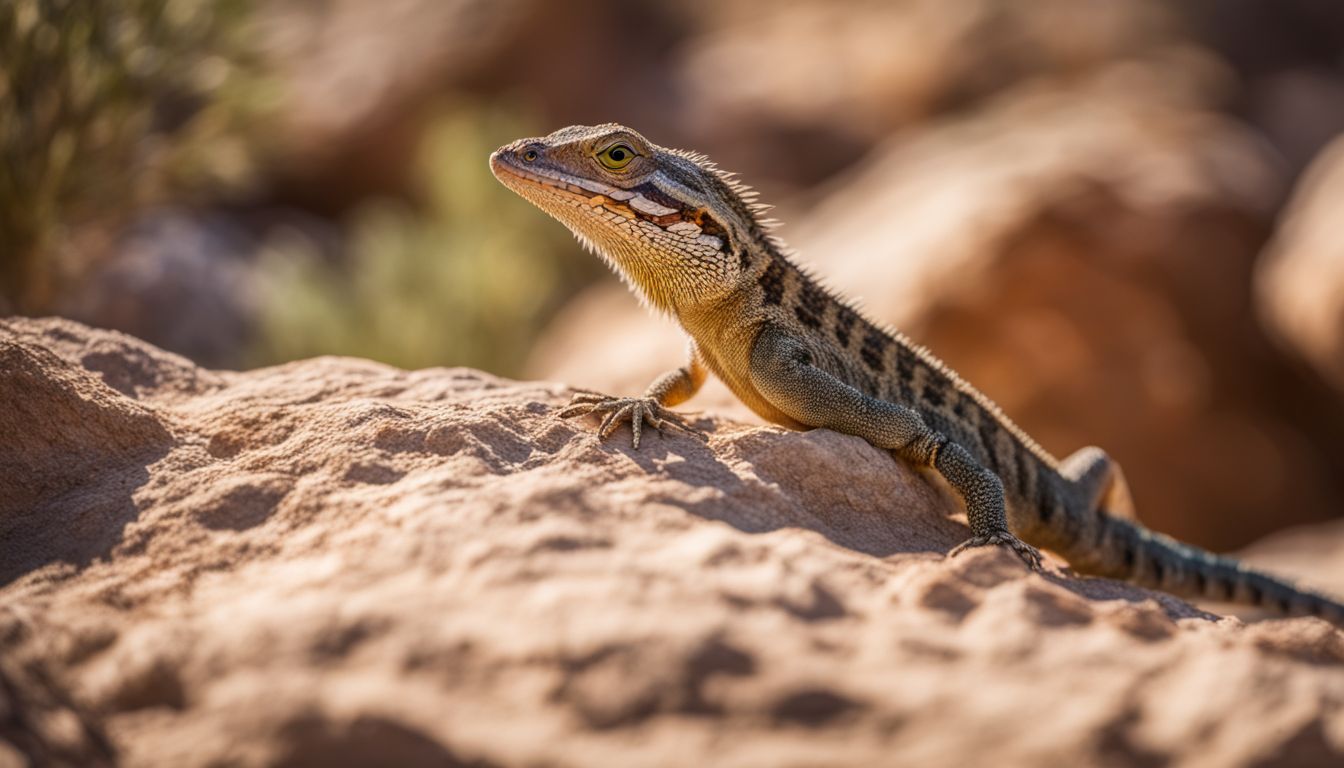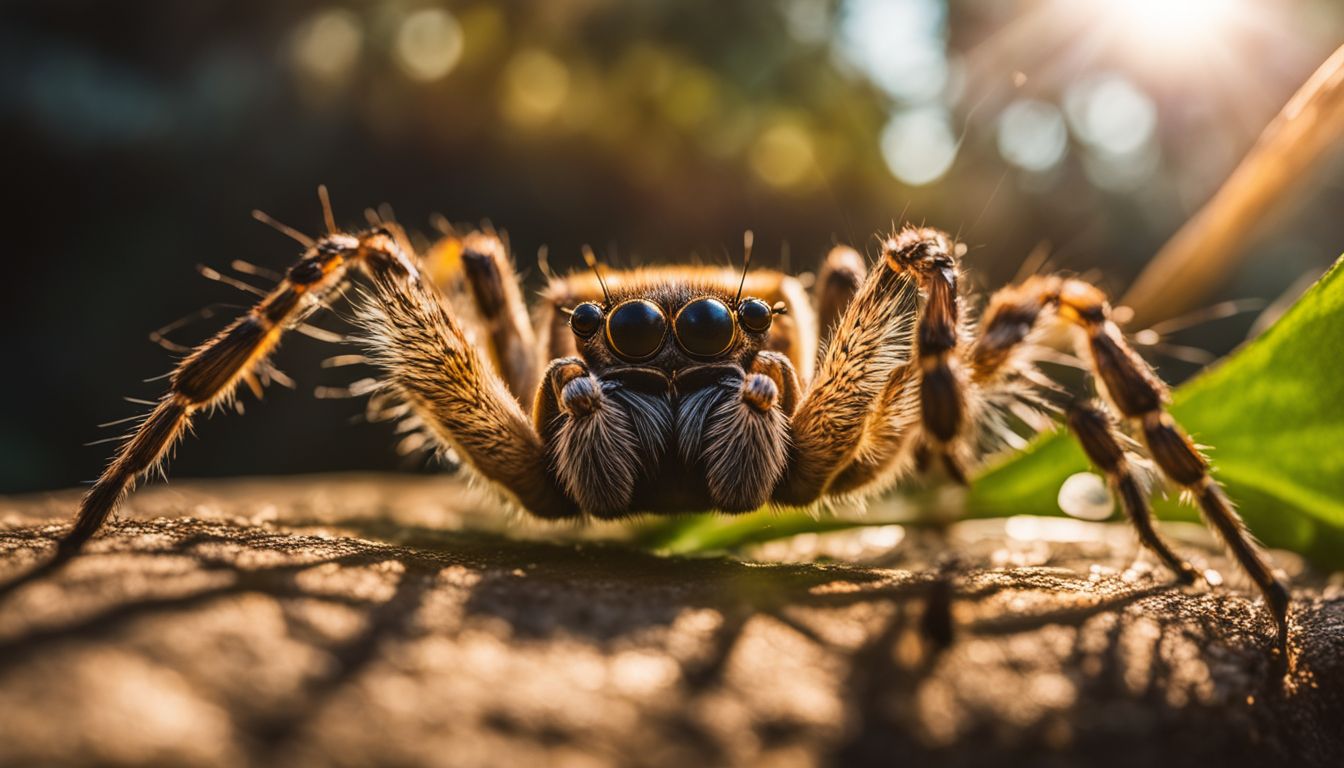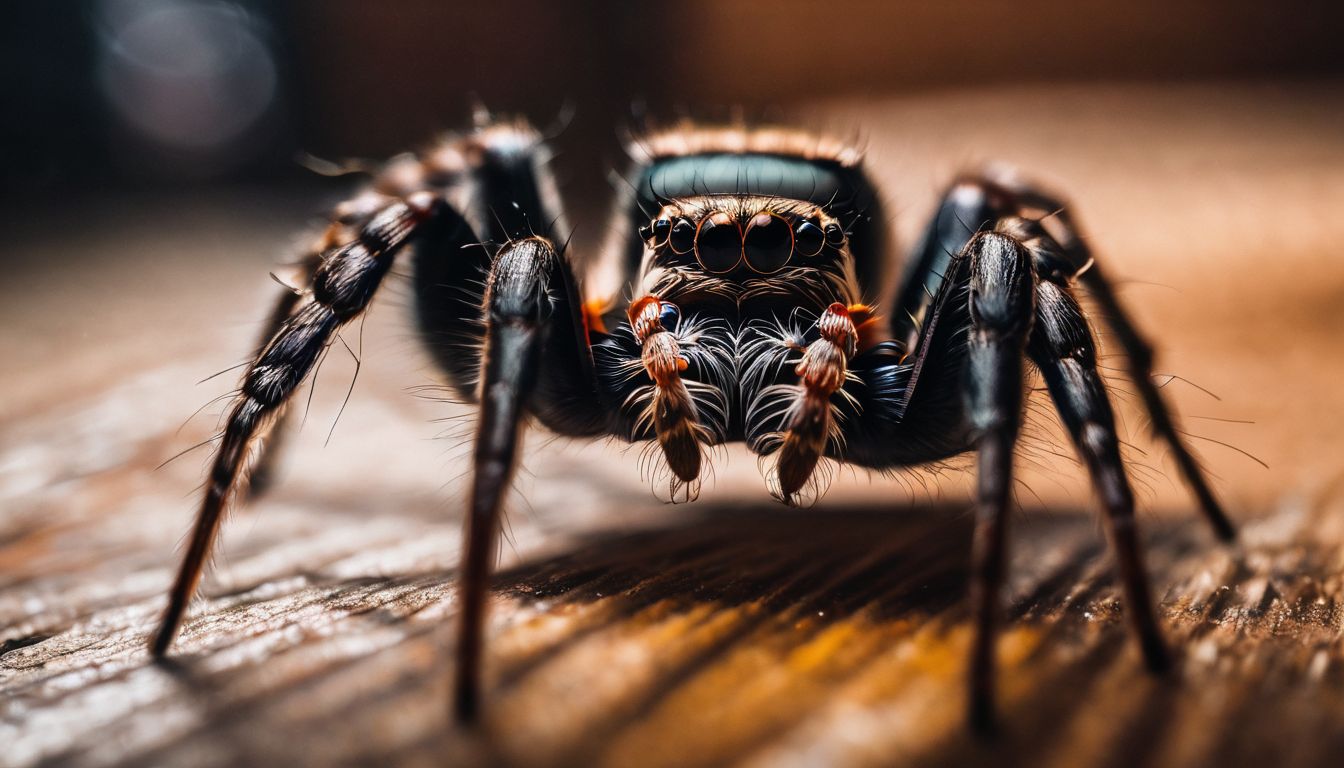Have you ever spotted a spider lounging in your basement and wondered if it’s searching for warmth? Surprisingly, spiders are cold-blooded, which means they rely on their environment to regulate their body temperature.
This blog post will delve into the fascinating world of spiders, explaining just how these eight-legged creatures survive without the need for cozy corners. Stay tuned to uncover the secrets of their survival!
Key Takeaways
- Spiders are cold – blooded creatures, meaning they rely on external temperatures to regulate their body heat and become less active in colder weather.
- They exhibit various behavioral adaptations to cope with temperature changes, such as adjusting activity levels, seeking sheltered spots, and employing different web-building techniques based on thermal conditions.
- Contrary to the common belief that spiders seek warmth during winter, they actually slow down due to their cold-blooded nature and may enter a state of diapause to survive in cold environments.
- Understanding the misconceptions about spiders’ behavior during colder months can help dispel myths and shed light on the fascinating survival strategies of these eight-legged creatures.
Understanding Cold-Blooded Creatures

Cold-blooded creatures, also known as ectothermic animals, rely on external sources of heat to regulate their body temperature. Unlike warm-blooded animals, they do not generate their own internal heat and must adjust their behavior and activity levels based on the surrounding temperatures.
Definition of Cold-Blooded
Animals that are cold-blooded don’t keep their body warm on their own. Instead, they need the sun or warmth from their surroundings to heat up. This group includes creatures like snakes, turtles, and all kinds of insects and spiders.
Their bodies change temperature with the place they’re in. If it’s hot outside, a cold-blooded animal’s body is warm. When it gets cooler, so does their body.
Spiders are part of this cold-blooded group too. They can’t run around to get warmer like we do when we’re chilly. So if you see them lying still in cool places like basements or storage areas, that’s because they’re trying to stay as warm as they can by soaking up whatever heat is around them.
How Cold-Bloodedness Works in Animals
So, now that we know what being cold-blooded means, let’s see how it works for these animals. Cold-blooded creatures like spiders don’t have control over their body heat the way people do.
They depend on sunlight or shade to warm up or cool down.
For example, a spider may sit in the sun if it needs to be warmer. Or it might hide under a rock to stay cool. This is because its body temperature changes with where it is and what’s around it.
The temperature outside can make a big difference in how active they are and even how well they can hunt for food.
The Cold-Blooded Nature of Spiders

Spiders are cold-blooded creatures, meaning their body temperature is dependent on the surrounding environment. This makes them more active in warm temperatures and less active in colder ones.
Understanding this aspect of spider physiology helps to better manage and control spider populations in and around your home.
Spiders’ Dependence on External Temperatures
Spiders are cold-blooded. This means they can’t make their own body heat. They must use the sun’s warmth or hide in the shade to get warm or cool off. When it gets very cold, spiders slow down and may even stop moving as much.
These creatures have an amazing way of living with the weather changes. In hot places, they might stay out of the sun during the day and come out at night when it’s cooler. During winter, many find spots like crawl spaces where they can wait for spring without freezing.
Spiders are tough and can handle different temperatures better than some other animals!
Behavioral Adaptations to Temperature Changes
Spiders’ dependence on external temperatures influences their behavioral adaptations to cope with temperature changes. Understanding these adaptations can help us appreciate how spiders survive in diverse environments:
- Spiders adjust their activity levels in response to temperature variations, becoming more active in warmer conditions and less active or completely dormant in colder temperatures. This helps them conserve energy during unfavorable weather.
- Some spider species migrate to more favorable microclimates within their habitat as temperatures change, seeking sheltered spots or adjusting their web-building locations to optimize thermal conditions.
- During extreme heat, spiders may seek refuge in cooler areas to avoid heat stress, while some species exhibit specific behaviors such as spreading their legs away from their bodies to decrease heat absorption.
- In colder climates, spiders may produce antifreeze compounds within their bodies to prevent freezing and utilize behavioral strategies like huddling together for warmth and seeking insulated locations for overwintering.
- Certain spider species exhibit diapause, a form of dormancy that allows them to endure prolonged periods of cold by slowing down their metabolic processes until temperatures become favorable again.
- Spiders also adjust their hunting and foraging behaviors based on temperature, with some being more active during specific times of the day when temperatures are most conducive for prey capture.
- Additionally, spiders employ varied web-building techniques influenced by temperature changes, adapting the size, shape, and location of their webs to maximize prey-catching efficiency under different thermal conditions.
Misconceptions About Spiders and Warmth
Many people believe that spiders seek warmth during colder months, but in reality, they become less active. Spiders have adapted to cold temperatures and can survive without seeking heat.
Myths vs. Facts: Spiders Seeking Heat
Addressing the common myths versus the facts regarding spiders and their search for warmth can be enlightening for those who believe these eight-legged creatures seek out heat like their warm-blooded counterparts.
| Myth | Fact |
|---|---|
| Spiders come indoors during winter to escape the cold. | Spiders are cold-blooded and do not actively seek out warm environments due to temperature changes. |
| Spiders enter homes in the fall to find warmth. | Entry into homes is not driven by a quest for heat; spiders often end up indoors by chance while seeking shelter or prey. |
| Spiders are warm-blooded and need heat to survive. | As cold-blooded creatures, spiders regulate their body temperature externally and do not require internal heat generation. |
| Spiders are always active and more visible when it’s warm. | Spiders may become less active during colder months due to a decrease in their metabolic rate, not because they seek or need warmth. |
Spiders’ behaviors are often misinterpreted, leading to the spread of these myths. Exploring the truths about their physiological needs reveals a fascinating aspect of their survival strategies.
Spiders’ Inactivity During Colder Months
Spiders become less active during colder months due to their cold-blooded nature. Because they rely on external temperatures to regulate their own body temperature, they slow down in cooler weather.
This is why we might notice more spiders indoors during the winter – they’re seeking warmth. It’s also interesting that spider populations peak in late summer, and then the spiders go through a period of diapause during the winter, which is like a hibernation for them as a way to survive the cold.
Spiders’ Winter Survival Strategies
During the winter, spiders may enter a state of diapause to conserve energy and survive in cold environments. They also have various mechanisms to manage in low temperatures.
The Concept of Diapause in Spiders
Spiders have a clever survival strategy called diapause. During this time, they slow down their activity and conserve energy in response to harsh winter conditions when food is scarce.
Photoperiod, or the length of daylight, triggers diapause in spiders, telling them it’s time to prepare for the cold months. This adaptation helps them survive in low temperatures by going into a state similar to hibernation.
Diapause also allows spiders to manage their water loss and withstand the challenging winter environment. By slowing down their metabolism and conserving energy, spiders can endure the cold and resume their normal activities when conditions become favorable again.
This fascinating strategy plays a crucial role in helping them cope with cold environments while ensuring their survival.
How Spiders Manage in Cold Environments
Spiders manage in cold environments through various survival strategies:
- Spiders hibernate during winter, entering a diapause phase similar to bears.
- They can survive at temperatures as low as – 5C, thanks to their ability to regulate body temperature.
- Some species seek shelter or burrow underground to escape the cold and lack of food.
- Spiders are well – adapted to endure the cold, dry air by hibernating or slowing down their metabolism.
- Despite being cold – blooded, spiders have evolved remarkable strategies for enduring harsh winter conditions.
Conclusion
In conclusion, spiders are cold-blooded creatures. They rely on external temperatures to regulate their body temperature. During winter, they become less active and may enter a state of diapause to survive the cold.
Despite misconceptions, spiders do not seek warmth and are well-adapted to living in various conditions, including cold environments.
To further explore the fascinating world of spiders and dispel another common myth, discover whether spiders have six legs in our informative article.
FAQs
1. Are all spiders cold-blooded?
Yes, all spiders, including house spiders, outdoor spider species like the jumping spider and even the fiddleback or brown recluse spider are cold-blooded.
2. What does it mean for a spider to be cold-blooded?
Being cold-blooded means that spiders can’t control their body heat. They get warm from the sun and cool down in the shade or hide in crawlspaces when it’s too hot outside.
3. Does being cold-blooded affect how I handle pest control for spiders?
For pest control, knowing that spiders are cold-blooded helps you understand why they might come inside your home to stay warm or find cool spots during different seasons which could lead to a spider infestation.
4. Can outdoor spiders live inside my house since they are cold-blooded?
Outdoor spider species may enter your home looking for a comfortable temperature because they’re cold-blooded; however, some might not do as well indoors away from their natural environment.




